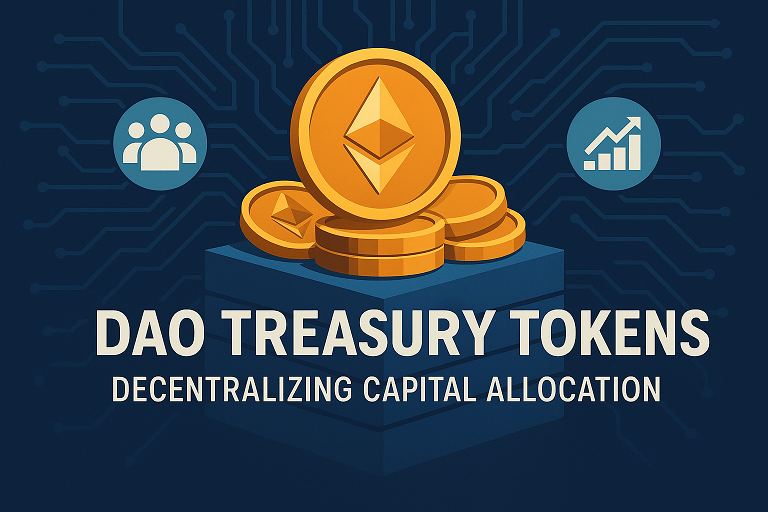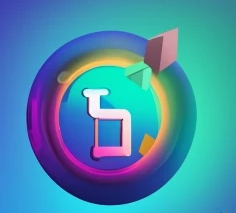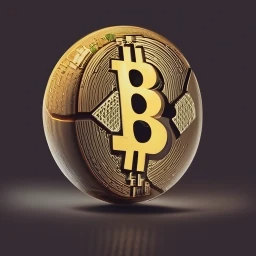Introduction
In the evolving landscape of decentralized finance (DeFi), decentralized autonomous organizations (DAOs) have emerged as a revolutionary structure for governance, community-driven decision-making, and capital distribution. At the core of this new paradigm lies an innovation that promises to further democratize the way resources are managed and deployed — DAO Treasury Tokens. These tokens are reshaping the dynamics of capital allocation, aligning incentives across stakeholders, and introducing a more transparent, efficient way of managing funds within DAOs.
Understanding the Role of DAOs in Modern Finance
DAOs mark a fundamental departure from the traditional top-down approach to organizational management. Rather than relying on centralized leadership, DAOs operate through community consensus, powered by smart contracts that enforce agreed-upon rules autonomously. Members can participate in decisions ranging from technical upgrades to capital allocation. Each action is governed by pre-defined protocols that ensure transparency and collective input.
The growth of DAOs has catalyzed a need for more sophisticated financial instruments. With communities managing increasingly large treasuries, the demand for tools that can enhance transparency, reduce inefficiencies, and encourage participation has skyrocketed. This demand has paved the way for a novel solution: Treasury Tokens.
Treasury Tokens: A New Standard for DAO Asset Management
At their core, Treasury Tokens are blockchain-based instruments that represent a share or claim over a DAO’s treasury. These tokens function as a bridge between governance and capital allocation, enabling token holders to influence how funds are distributed. Unlike governance tokens that merely provide voting rights, these tokens are explicitly linked to the financial reserves of the DAO, giving holders a more tangible stake in financial decisions.
The design of these tokens can take many forms, tailored to the specific goals and structure of the DAO issuing them. Some are secured by reserves of stablecoins or crypto assets that reside within the DAO’s control. Others are algorithmically controlled, adapting their value and issuance based on treasury inflows and outflows. This versatility makes them an ideal mechanism for aligning the interests of investors, contributors, and the broader community.
How DAO Treasury Tokens Improve Capital Management
1. Enhanced Transparency and Accountability
One of the biggest criticisms of traditional organizations — and even some DAOs — is the lack of clear oversight in capital deployment. Treasury Tokens change this by offering a transparent ledger of allocations, expenditures, and holdings. Token holders can trace every transaction, ensuring that capital is used in alignment with the DAO’s mission.
2. Incentivizing Long-Term Participation
When the value or influence of tokens is directly linked to the financial health of the treasury, DAOs can motivate contributors to focus on sustainable growth. This connection encourages active participation and alignment with long-term goals rather than short-term gains.
3. Responsive Budgeting Through Community Input
Legacy budgeting frameworks are often rigid, with fixed timelines and limited room for community response. Treasury Tokens, on the other hand, enable real-time adaptation to evolving needs, allowing DAOs to reallocate resources as necessary through proposals and consensus-driven mechanisms.
4. Risk Mitigation and Resilience
By diversifying treasury holdings and implementing token-based controls, DAOs can better manage risk. Some Treasury Tokens incorporate vesting schedules or lock-up periods to prevent capital flight. Others include decentralized insurance mechanisms. This added layer of financial engineering makes DAO treasuries more robust and resilient in volatile markets.
Use Cases Across DAO Ecosystems
Numerous DAO projects have started to implement Treasury Tokens, each with unique models tailored to their ecosystems.
1. Gitcoin DAO
Gitcoin, a platform supporting open-source development, has explored treasury tokenization to improve grant distribution. By tying tokens to funding rounds and project milestones, they ensure funds are used efficiently and transparently. Contributors can track where funds go and how they’re spent, creating a feedback loop that strengthens trust.
2. MakerDAO
MakerDAO, known for its decentralized stablecoin DAI, has experimented with treasury mechanisms to allocate surplus funds. Through a structured voting and allocation model, it ensures that funds are distributed to development teams and initiatives that align with its long-term vision.
3. Index Coop
Index Coop has explored integrating tokenized treasury assets as a way to streamline index management and better compensate contributors. This approach aims to bring more automation and fairness into their operational workflows, ensuring both strategic efficiency and community inclusion.
Challenges and Considerations in Implementing Treasury Tokens
Despite their promise, Treasury Tokens also raise important questions and challenges.
1. Regulatory Uncertainty
As with many blockchain-based innovations, regulation lags behind technological development. Some jurisdictions may view Treasury Tokens as securities, especially if they represent a claim on real-world value. This uncertainty can pose risks to projects and their contributors.
2. Technical Complexity
Creating and maintaining these tokens involves advanced knowledge of smart contract architecture and deployment processes. Teams must carefully design the system to ensure it functions reliably under various conditions and scales effectively with the community.
3. Governance Disputes
Conflicting priorities among stakeholders, particularly in large and diverse DAOs, can lead to delayed or paralyzed decision-making. Ensuring effective governance requires mechanisms that balance inclusivity with actionability.
4. Liquidity and Volatility
Depending on how Treasury Tokens are structured, they may be exposed to significant market fluctuations. For instance, if a token is backed by volatile crypto assets, its value can swing dramatically. These fluctuations introduce complexity when trying to forecast expenditures or manage long-term strategic planning.
Treasury Tokens as Tools for Community Empowerment
Beyond financial management, Treasury Tokens represent a deeper philosophical shift in how communities govern themselves. In traditional organizations, capital decisions are made by a select few. In contrast, DAO communities can use these tokens to ensure every voice matters.
This is particularly impactful for marginalized or underrepresented groups. Projects focused on climate action, social justice, or public goods can use Treasury Tokens to raise and allocate funds in ways that reflect their values. Instead of relying on centralized donors or institutions, these DAOs can empower communities to govern their own capital.
Best Practices for DAOs Launching Treasury Tokens
For DAOs considering the implementation of Treasury Tokens, several best practices can guide a successful rollout:
- Start Small: Pilot programs with limited funds can help test mechanics and identify issues before scaling.
- Prioritize Security: Engage in third-party audits, implement bug bounty programs, and use time locks for large transactions.
- Foster Community Education: Make sure token holders understand how Treasury Tokens work, what rights they confer, and how decisions are made.
- Build Inclusive Governance: Ensure that participation is open, accessible, and representative of diverse community interests.
- Integrate with Existing Tools: Use platforms like Snapshot or Gnosis Safe to streamline token-based voting and capital disbursement.
The Future of DAO Finance with Treasury Tokens
As DAOs continue to evolve, so too will the tools that support them. Treasury Tokens are likely to become a standard feature of DAO infrastructure, particularly as DeFi and on-chain governance mature. They offer a compelling solution to one of the most persistent challenges in decentralized ecosystems: how to allocate capital effectively, transparently, and democratically.
With improvements in token design, integration with DeFi protocols, and increased legal clarity, Treasury Tokens could become the foundation of a new kind of financial system — one built not on centralized control, but on distributed trust and cooperation.
Conclusion
DAO Treasury Tokens are more than just a financial instrument — they’re a declaration of autonomy and community empowerment. By decentralizing capital allocation, these tokens enable more inclusive, transparent, and resilient financial systems. While challenges remain, the potential for positive transformation is enormous. As innovation continues to shape the DAO landscape, Treasury Tokens will likely play a pivotal role in realizing the full promise of decentralized governance.




















